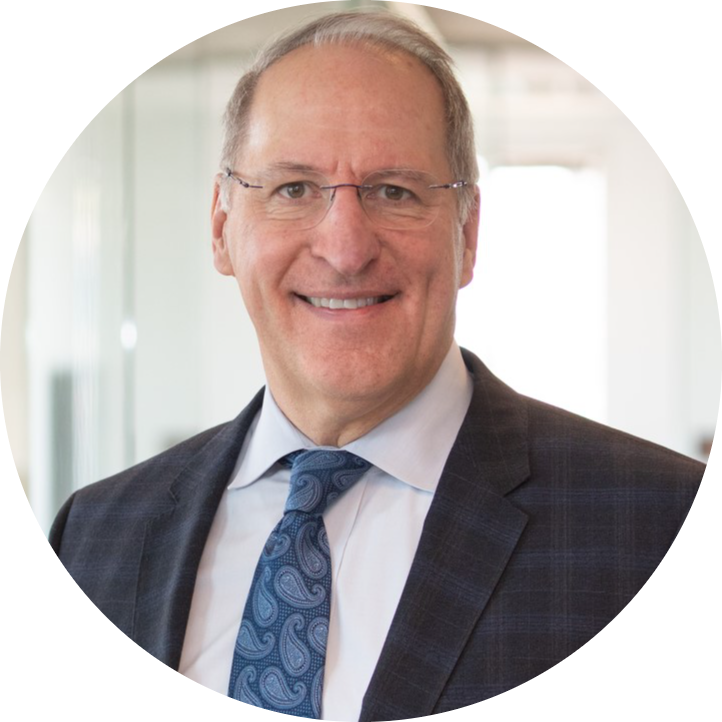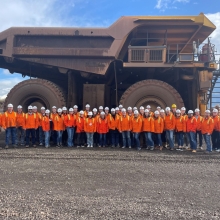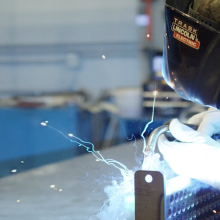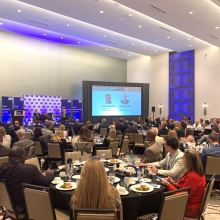Analyzing the 2024 election: A Q&A with Blois Olson

By Doug Loon
President and CEO
Minnesota Chamber of Commerce
Doug Loon: We're excited about the conversation we’re going to have today regarding some of the political work of the Chamber of Commerce. We run a program called the Minnesota Business Network, which aims to bring together individuals who are sympathetic to the business community and want to support candidates who represent business interests well in their elected positions, particularly those serving or aspiring to serve in the state legislature. We have a very important election season ahead of us and early voting has already started. If you're unavailable on November 5, be sure to vote early and make your voice heard.
With me today is a special friend of the Chamber, and to me personally, Blois Olson, a political expert here in Minnesota. Blois will also be with us for our upcoming Minnesota Business Network event. I asked him to join us today for some back-and-forth discussion about the current political landscape in the state. Let me first clarify that Blois is a political analyst, not a political commentator, so he’ll share his analytical skills and objective opinions as a deep expert in Minnesota politics.
Doug Loon: Give us your perspective on what's at stake this year. It’s a presidential year, but there’s a lot happening down ballot that matters greatly to Minnesota. How does this cycle compare to previous ones?
Blois Olson: When we looked at this cycle in the fall of 2023, it seemed like it might be a boring year in Minnesota. Then Dean Phillips announced his presidential run, and Tim Walz joined the national stage. Locally, we are closely watching the shifts in power and potential changes in the legislature. There's a Senate special election in District 45, but the real opportunity for Republicans to regain relevance lies within the Minnesota House. There are about 12 to 15 races that are very local and community driven. The mood of those districts will be critical; it's not necessarily about the mood of the country or even the state, but rather about the mood of the district.
As Minnesota goes, we see how partisan and issue dynamics change depending on the region—whether you're in greater Minnesota, the exurbs, the suburbs, or the city. I believe that much of the uncertainty this election lies in the exurbs, where Democrats have started to gain traction, and we’ll see if they can hold it this cycle.
DL: Reflecting on the 2022 election cycle, as well as the 2023 and 2024 legislative sessions, we can see that some actions were not helpful to businesses from the Chamber’s perspective. We looked at the races that were really close and made a difference in establishing the trifecta, and it’s striking that only about 1,400 votes separated the trifecta from not having single-party control in Minnesota. As you pointed out, elections are very localized, and people are engaging. We hope the business community will be educated and mobilized on election day to help restore balance in policymaking in Minnesota, which has traditionally been about thoughtful discussions that bring together all interested parties for a competitive business climate.
When we consider the top of the ticket, we won’t focus on that today, but it certainly affects the entire ballot. How does Minnesota usually respond to presidential elections, both in terms of turnout and down-ballot effects?
BO: There’s a relatively recent phenomenon with the top of the ticket; former President Trump has driven about 250,000 more votes for Republicans in Minnesota than we’d historically see. On the other hand, Democrats have significantly boosted their turnout in urban areas since 2016, 2017, and 2018. I think Governor Walz being on the Harris-Walz ticket gives Democrats more energy than they might have had otherwise. However, strong feelings against Governor Walz could energize the opposition as well.
Minnesota is consistently a high turnout state; we saw our highest turnout in 2008 at around 81% in presidential years. We need to keep an eye on those turnout numbers and where the intensity lies, as that will ultimately decide the legislature. If one side turns out more voters in these competitive districts, those votes will be crucial.
DL: Our intention is to inform business-sympathetic voters and encourage them to vote. Businesspeople often have busy schedules and might be out of town or unable to vote on election day. It’s important for them to look at the calendar, take advantage of early voting if it fits their schedule, and engage with the Minnesota Matters coalition led by the Chamber and in partnership with other business organizations to ensure the business vote gets out on or before November 5.
Let’s discuss one last issue before we wrap up. If Governor Walz is successful in his candidacy, we could see Lieutenant Governor Peggy Flanagan stepping into the role of governor. What kind of change and dynamics might that create for St. Paul, particularly regarding the Minnesota Senate and Flanagan's experience level?
BO: Lieutenant Governor Flanagan has been described by many, most recently in the Wall Street Journal, as Governor Walz’s "progressive whisperer." She is more progressive than Governor Walz has been traditionally, and I believe she has a different style. She also focuses on issues and constituencies that are more likely to support her, particularly those that are more progressive or liberal. As an original founding member of the People of Color and Indigenous Caucus in the Minnesota Legislature, urban issues will likely be a priority for her.
Depending on the dynamics of the legislature, if it leans Republican and Flanagan becomes governor, the balance of power will really test her leadership. This will reveal what she will prioritize and where she will draw the line on vetoes and other issues. There are many unpredictable dynamics at play, but we’re watching closely. She’s becoming more visible and is clearly testing the waters. Flanagan has stated that if she becomes governor, she plans to run in 2026, so think of this as her runway. We’ll see if it takes flight and how stable that flight is once she assumes the governorship.
As you pointed out, she would be ascending to the governorship, given that she is not currently on the ballot. This creates an interesting dynamic, especially in the Senate, where the President of the Senate traditionally ascends to the role of lieutenant governor. That situation will need to be resolved, as it hinges on a single seat. There are many dynamics at play here, particularly with Governor Walz being on the national ballot and how it will impact Minnesota.
DL: Thank you, Blois, for being with us today. One last pitch to all businesspeople out there: make sure you vote this election season and stay informed. It’s crucial that businesspeople understand the issues that matter most to them as they prepare to vote, and remember that local elections greatly influence the direction of our great state.


